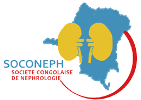Megha Salani, Shuvo Roy, and William H. Fissell IV
More than 2 million people worldwide receive treatment for end-stage renal disease (ESRD). Current modalities of renal replacement therapy include in-center hemodialysis, peritoneal dialysis, home hemodialysis, and kidney transplantation. Patient survival has gradually increased during the past 2 decades and efforts continue to improve mortality and quality of life for patients with ESRD. Developments in sorbent technology, nanotechnology, and cell culture techniques provide promise for new innovations in ESRD management. New modalities currently in testing include wearable (WAKs) and implantable artificial kidneys (IAKs). The automatedWAK (AWAK) andWAK are devices that have undergone small trials in humans. Additional study is needed before regulatory approval, coverage decisions, and widespread clinical implementation. The IAK is a biohybrid combining artificial filters and living cells currently in preclinical testing. These portable devices reduce the need for large quantities of water and continuous electrical supply. This could lower some barriers to home dialysis, making self-care renal replacement therapy more accessible and desirable. If widely successful, these devices could reduce the need to build and staff dialysis facilities, thus lowering health care costs associated with dialysis. The potential advantages and shortcomings of the AWAK,WAK, and IAK are described here.
AJKD Vol 72 | Iss 5 | November 2018
AJKD-nov-18-rein-artificiel-portable-et-implantable-les-news-1.pdf (959 téléchargements )